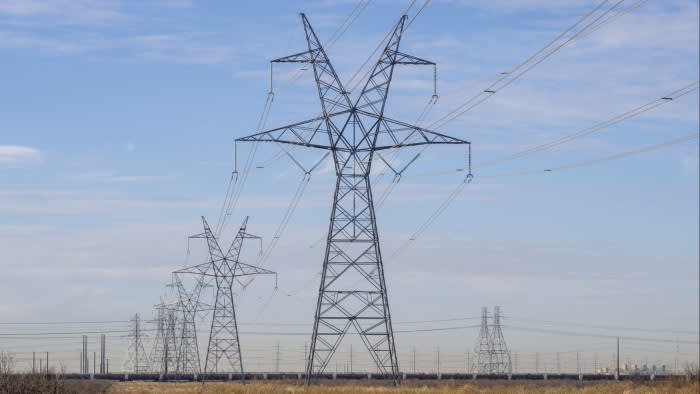Unlock the Editor’s Digest for free
Roula Khalaf, Editor of the FT, selects her favourite stories in this weekly newsletter.
From bankruptcy to billions. Vistra Energy and Talen Energy are so-called independent power producers. Their fleets of natural gas, coal, nuclear and renewable energy plants generate electricity. That power is sold into competitive markets across the US at prevailing market prices.
Those prices can swing wildly leading to boom and bust cycles. In fact, Vistra and Talen came to the US public markets after emerging from Chapter 11 bankruptcy where hedge fund creditors had seized their ownership. And last week, they became among the biggest winners of the new reality in US energy: not enough production amid rocketing demand.
PJM Interconnection — an administrator of the US regional grid stretching from the mid-Atlantic to the Midwest — held an auction for supplemental electricity to be delivered in 2025 and 2026. The clearing price was $270 per megawatt-day, nearly 10 times the level set at the last auction two years ago. On the one hand are hungry data centres and EVs. On the other are polluting coal-fired plants that have been rapidly shuttered for environmental reasons.
IPPs are increasingly owned privately rather than by traditional regulated utilities that answer to public mutual funds in search of stable and socially responsible returns. Carlyle Group on Monday sold a collection of natural gas plants to another financial sponsor Quantum Capital for $3bn.
Vistra — which came out of the infamous $45bn TXU leveraged buyout in 2008 — and Talen ended up in bankruptcy because they were on the wrong side of commodity price bets amid heavy debt loads.
Talen said its winning commitments in the auction would raise its annual revenue by $670mn, or 40 per cent, with most of that falling to the bottom line as windfall profit. Its market cap jumped $800mn or 12 per cent. Vistra’s market cap rose $3.5bn, or 15 per cent.
Data from the US energy department shows that aggregate power production in the US, at 4.2tn kilowatt hours, is virtually unchanged in the last 15 years. PJM pointed out that one purpose of auctions is to incentivise power producers to meet demand by giving them clear market signals.
But the American dynamic is tricky. Most of the electricity that the auction elicited came from natural gas, coal and nuclear, where production is falling out of favour compared to renewables. IPPs, particularly private ones, are more cold-blooded and profit-driven and set to capitalise on the supply-demand mismatch. The dilemma then for America is its willingness to tolerate the higher consumer electricity prices prompted by aversion to fossil fuels.
sujeet.indap@ft.com


